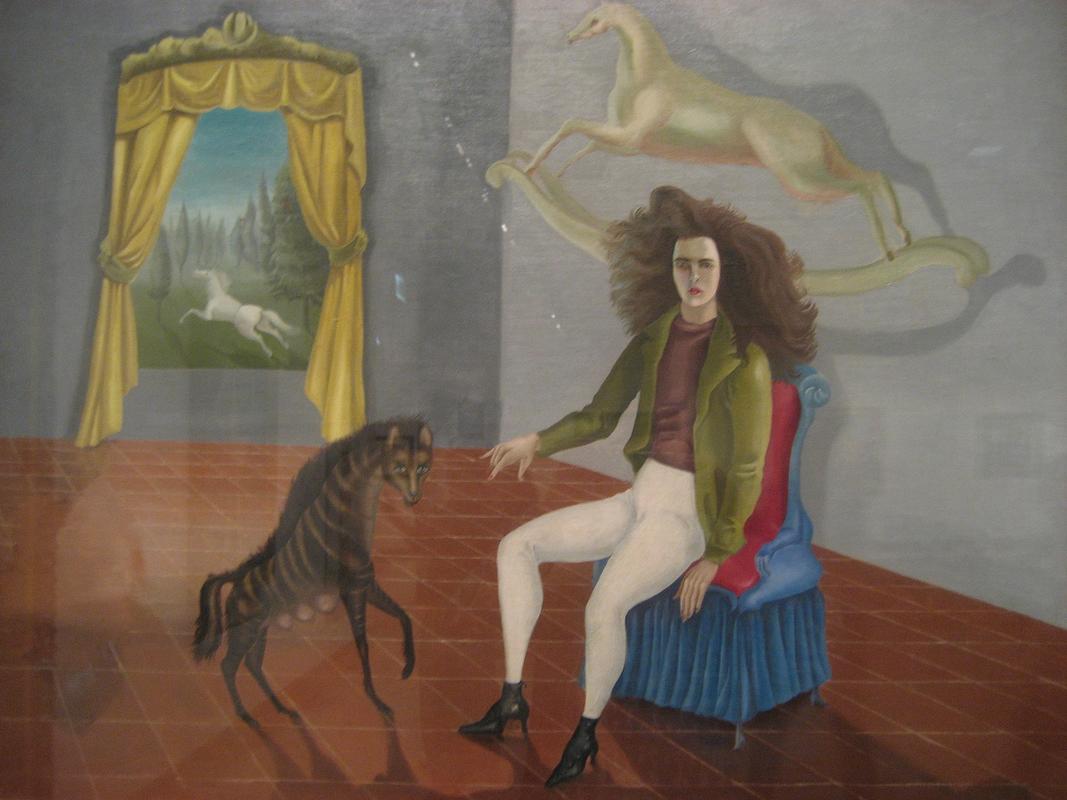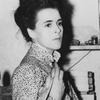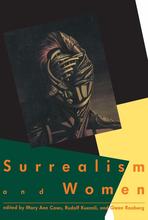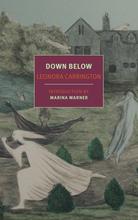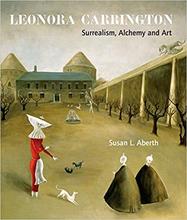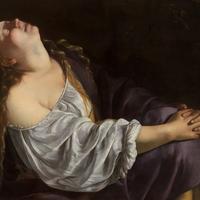More about Self-Portrait
- All
- Info
- Shop
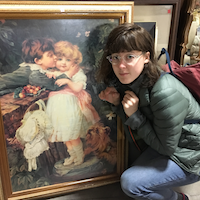
Contributor
Leonora Carrington’s hyenas are also her bodyguards and if crazy eyes are any indicator of seriousness, the ones in her Self-Portrait is definitely saying to back off.
If a picture is worth a thousand words, this painting is worth about a million, and at least four of them are “come at me, bro.”
When Carrington ran off with infamous womanizer Max Ernst to join the art scene in Paris, her father was allegedly so angry that he tried to have Ernst arrested for exhibiting pornographic work—pieces even more scandalous than his Temptation of Saint Anthony or The Antipope, perhaps? Leonora wasn't phased. She would soon be living amidst a Surrealist cohort that invited women into their mega-exclusive boys club as muses and objects of desire but rarely as equals. Again, she wasn't phased.
On a scale of “1 to not taking any sh*t” Leonora Carrington was off the charts. She was beautiful (Self-Portrait isn't necessarily catching her good side) with an adventurous spirit, which in any other case would banish her to the category of "muse material." But she made it clear from day zero that she was only interested in tapping into her own bizarre subconscious, where she harbored fantastical dreams of white horses and especially female hyenas.
Now, if I were to choose an animal BFF, it would probably be a dog because they're cute, loving and faithful. The hyena in Self-Portrait, however, seems a rather unsettling blend of all-knowing, sinister, and demonic, but then again, anyone who’s seen The Lion King or Planet Earth knows that they are not the most affable creatures in the animal kingdom. My guess is that she did some detective work and found out that these fierce predators actually have a few things in common with our favorite fiery Surrealist.
-
Spotted hyenas are some of the most skilled hunters and have teeth that can crush through bone, hence their apt nickname, “bone crushing hyenas.”
-
They're matriarchal! Female hyenas run the pack, as they are stronger and more aggressive than males due to a larger amount of testosterone in their bodies.
-
There’s a myth floating around that female hyenas are hermaphroditic, because they actually have rather large “pseudo-penises,” through which they pee and give birth, the latter being a dangerous endeavor. The little bundle of joy risks suffocation.
So, considering that Leonora is pretty much into all of these things—dominating over men, kicking ass, and taking names—we’re pretty convinced that the hyena is a fitting spirit animal for her. She depicts herself as both androgynous and terrifying, with the 20th century chic hairstyle "perm gone wrong," as she reaches towards her menacing counterpart who, in turn, seems to shield her from the greedy hands of those who want to take advantage. I’m not sure Leonora needs much protecting, but the two of them comprise a duo that I definitely wouldn't want to cross in a dark alley.
Technical analysis at ye ol’ Metropolitan Museum of Art, Self-Portrait’s cozy home, has revealed that Carrington actually gave the painting a bit of a makeover after it had already been finished. She initially portrayed herself scantily clad in a low cut black top that would send the horny Surrealist imagination spiraling into oblivion. Maybe it got cold in (or maybe she came to her senses), as she replaced the original black shirt with one that’s much more modest and added a jacket to boot. In case you were wondering what the visible smudge in the bottom left corner is from, you’ll be happy to know that it isn’t a ghostly apparition but evidence of where she covered up a previously painted doll.
Carrington succeeded in asserting herself as an equal, eventually exhibiting Self-Portrait at an auction hanging from a tree branch amidst Max Ernst's own work. I would expect nothing less from the woman who, when asked by Joan Miró to fetch some cigarettes, threw his coins back in his face and told him he could “bloody well get them himself." The moral of the story? Sometimes you've got to channel your inner hyena to get a little R-E-S-P-E-C-T.
Sources
- Dahl, Nel. "The Forgotten Surrealist Painter Who 'Didn't Have Time to Be Anyone's Muse'" Broadly. April 12, 2017. Accessed May 28, 2017. https://broadly.vice.com/en_us/article/surrealist-painter-leonora-carri….
- Carrington, Leonora. Complete Stories of Leonora Carrington. S.l.: Small Press Distribution, 2017. Introduction.
- Galitz, Kathryn Calley, and Thomas P. Campbell. The Metropolitan Museum of Art: Masterpiece Paintings. New York, NY: Skira Rizzoli Publications, 2016. Print. 527.
- Laity, Paul. "The Surreal Life of Leonora Carrington by Joanna Moorhead – review." The Guardian. April 05, 2017. Accessed June 14, 2017. https://www.theguardian.com/books/2017/apr/05/the-surreal-life-of-leono….
- Lenz, Lyz. "12 Wild Facts About Hyenas." Mental Floss. May 01, 2015. Accessed June 14, 2017. http://mentalfloss.com/article/63455/12-wild-facts-about-hyenas.
Featured Content
Here is what Wikipedia says about Self-Portrait (Inn of the Dawn Horse)
Self-Portrait (Inn of the Dawn Horse) is a painting executed by English artist Leonora Carrington and is currently in the collection of the Metropolitan Museum of Art. She began the painting in London in 1937 and completed it in Paris in 1938. It is one of her most recognized works and has been called her "first truly Surrealist work". The presence of horses and hyenas soon became a common feature in her work.
Check out the full Wikipedia article about Self-Portrait (Inn of the Dawn Horse)

